Most likely I’m mistaken, but around here it seems that autumn foliage colors are late and more muted than usual. Until the past week there was not much at all to see, but now, after a week of cold, dogwoods (Cornus x ‘Celestial Shadow’, below) have turned to crimson, and just about everything else, to yellow. The romanticized version of autumn is of leaves turning to red and gold, but the reds are few and the golds are often more a sickly yellow.
Still, if the close up is not so beautiful, the long view of a forest of yellows with a few scattered reds, and perhaps even an orange or two, is often magnificent. On this evening, under a graying sky with spitting rain showers, the yellows of ordinary swamp maples (Acer rubrum) glowed, contrasting splendidly with the red foliage of dogwoods in the fading light.
Though the red and yellow mottled leaves of blackgums (Nyssa sylvatica, above) have dropped prematurely, twenty-some varieties of Japanese maples (Acer palmatum) in the garden display colors ranging from stunning golden yellows to deep reds. The best of the lot for this season is the Fernleaf Japanese maple (Acer japonicum ‘Aconitifolium’, below), easily the equal of the superb blackgum, but less dependent on ideal weather conditions for its autumn brilliance.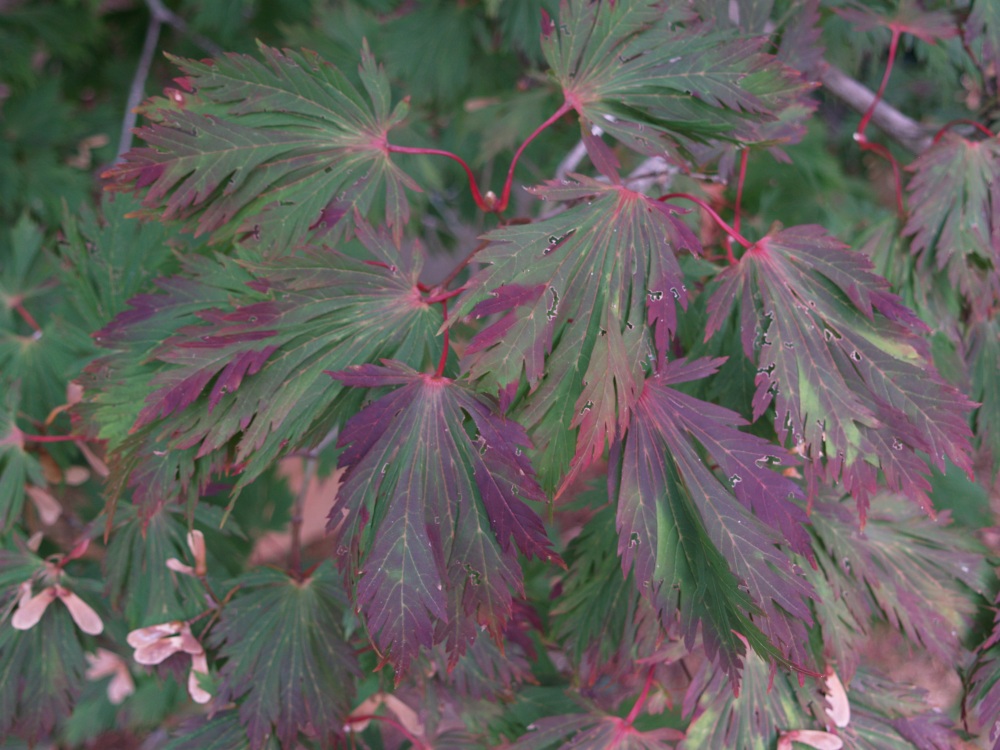
In early November, foliage of swamp maples and tulip poplars in the forest that border the garden are yellow and faded, and pockmarked by black spots. These are best viewed from a distance so these defects are less obvious, and the saddest of the trees is the Bigleaf magnolia (Magnolia macrophylla), with gigantic leaves that are a very tired and faded yellow.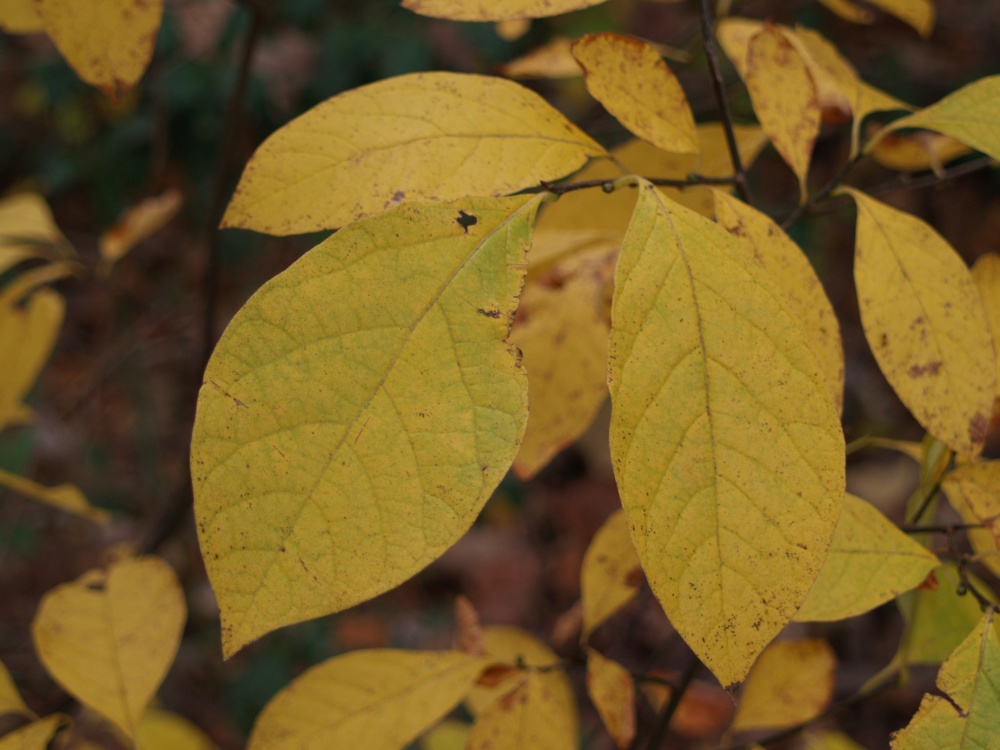
But, there are many exceptional yellows in this garden. The foliage of spicebush (Lindera benzoin, above) and sweetshrub (Calycanthus floridus, below) is unexceptional through much of the year, but today each glows beneath the forest’s canopy. Several witch hazels (Hamamelis x intermedia ‘Arnold Promise’, 2nd photo below) are colored a soft yellow, though some display shades of orange or red that are quite magnificent.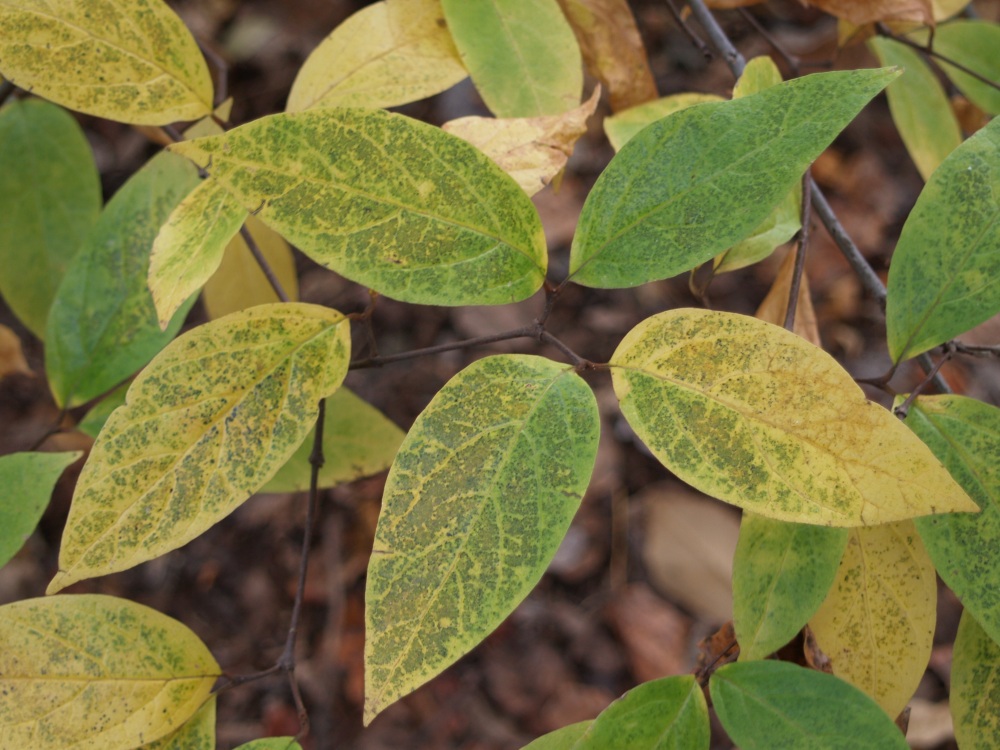
 Perhaps the most splendid yellows in the garden are the common bluestar (Amsonia hubrichtii, below) and Ginkgo (Ginkgo biloba, second photo below). Bluestar has narrow, needle-like foliage that turns a soft yellow in early autumn that persists many weeks until a hard freeze. This tough perennial is a superb filler and background, but in autumn it warrants a space in the front row. Ginkgo turns to a brilliant yellow in early autumn, and then its leaves drop in a single day, so the tree goes from beautiful to bare.
Perhaps the most splendid yellows in the garden are the common bluestar (Amsonia hubrichtii, below) and Ginkgo (Ginkgo biloba, second photo below). Bluestar has narrow, needle-like foliage that turns a soft yellow in early autumn that persists many weeks until a hard freeze. This tough perennial is a superb filler and background, but in autumn it warrants a space in the front row. Ginkgo turns to a brilliant yellow in early autumn, and then its leaves drop in a single day, so the tree goes from beautiful to bare.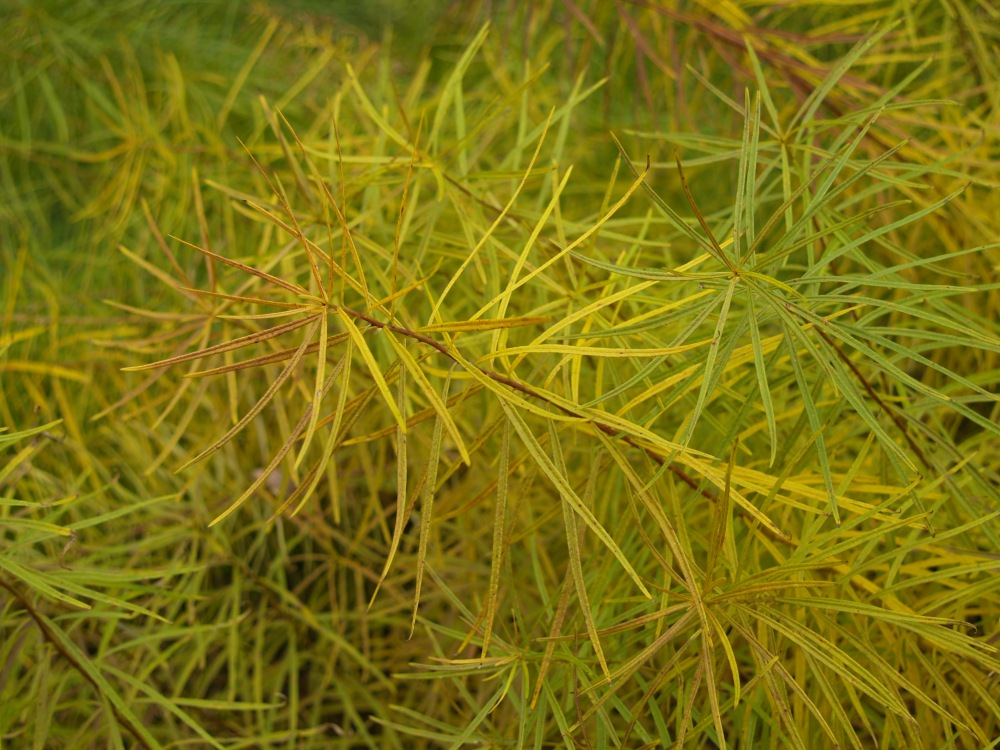
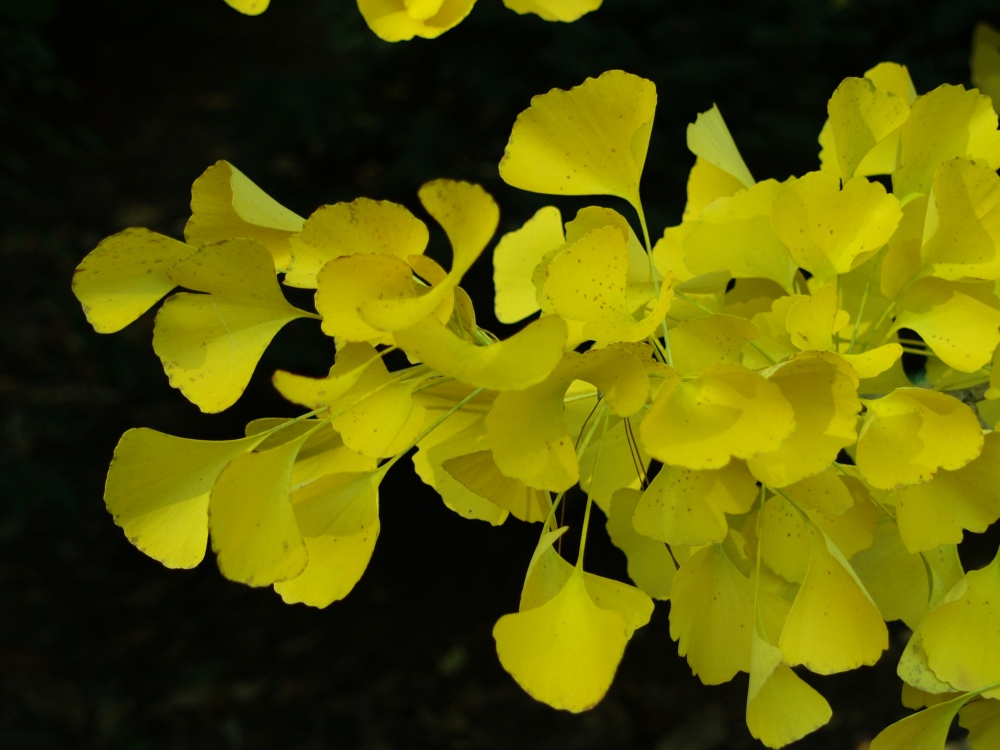
I think you are right that the colors are a little slow this year, at least in the Southeast. I went to see Japanese maples this weekend in a famous garden, and the owner was telling everyone to come again next weekend as the colors hadn’t fully emerged yet.
In my small collection of Japanese maples there are a few that begin to color in early autumn, and others that don’t turn until mid November. The schedule has shifted later by a few weeks, and as always there’s a disappointment or two, but most are showing exceptional color today. I could not choose a single weekend as the peak for the maples since one group or another is at its best over a two month period.